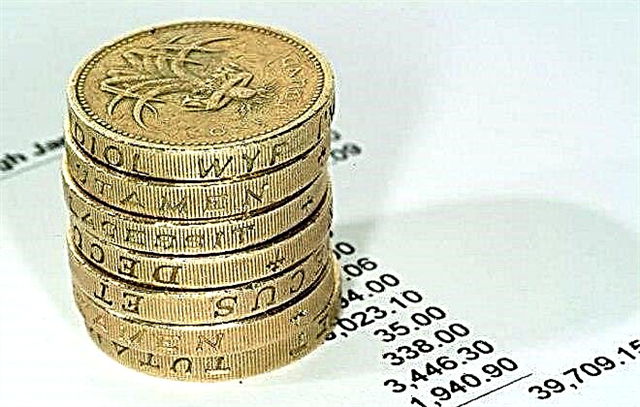As in any other country, taxes in Finland are the main source of budget revenues. The country has a taxation system traditional for the European Union, where relatively high taxes are levied at a progressive rate as the payer's income grows. But income tax is just one of the many mandatory fees that Finnish residents have to pay. Cumulative tax collection in 2021 reached 65.6 billion euros, in a country with a population of only 5.5 million.

Taxpayers and types of taxes
Taxation in Finland applies to all residents of the country, including:
- individuals, regardless of their citizenship, living in Finnish territory for more than 183 days a year;
- legal entities registered in Finnish territory or otherwise established in accordance with Finnish law.
The rest, including Finns, if they do not reside permanently in the country, pay taxes in Finland in 2021 only from those incomes that are received from Finnish sources. This taxation regime is considered limited, it is mainly used by foreigners, foreign companies - partners of Finnish enterprises, as well as labor migrants who come for seasonal work and stay in the country for less than six months. Taxation of non-residents differs significantly both in principles and in the applied tax rates.
The types of taxes in Finland can traditionally be divided into direct and indirect. All taxes that are accrued on the income or profits received are considered direct. These include:
- state income tax (Ansiotuloverotus);
- capital gains tax (Pääomatuloverotus);
- Asset transfer tax (Varainsiirtovero);
- gift and inheritance tax (Lahjaveron);
- municipal income tax in Finland (Kunnallisveroa);
- corporate corporate income tax (Yhteisövero) and others.
All consumer fees are considered to be indirect, that is, everything that is additionally charged on goods and services, for example:
- value added tax (Arvonlisävero);
- excise and customs duties;
- tax on alcohol and alcoholic beverages (Alkoholijuomavero);
- tobacco tax (Tupakkavero);
- fuel tax (Polttoainevero);
- TV tax in Finland or the so-called public service broadcasting tax (Yle-vero) and others.
Depending on the beneficiaries, taxes in Suomi are mainly divided into state and municipal taxes. Community taxes, such as church taxes, and social security contributions may also be levied. The administration of fees and the redistribution of money is handled by the local tax administrations - Verohallinto.
We propose to consider in more detail what taxes are paid in Finland, to whom and to what extent they apply.
Corporate income tax
The most common legal forms of legal entities subject to corporate taxation are limited liability companies (Osakeyhtiön) and cooperatives (Osuuskunta). Local legislation allows you to distinguish the following taxes in Finland for legal entities:
- corporate income tax;
- capital gains tax.
The main, of course, is the income tax, levied at a rate of 20% of the amount of profit received. Three possible sources of income are envisaged - commercial activity, agriculture and passive personal income. The costs for each of them can only be accounted for within the source in which they were incurred.
Corporate income tax in Finland is calculated from the gross income received from each source.
The law allows for the redistribution of losses incurred by a legal entity, taking them into account over the next 10 years as income arises, but only within the source in which they were incurred. More information here.
Capital gains tax
Capital gains tax for limited liability companies and cooperatives is already included in the corporate tax and is taxed at a rate of 20%.

Another thing is private entrepreneurs and self-employed persons, partnerships and public companies that do not conduct business as legal entities. Their income is taxed cumulatively, without allocation to sources. The base rate is 30%. But the amount of taxes in Finland is usually levied at a progressive rate, so if the amount of income of these persons exceeds 30 thousand euros, the rate will increase to 34%.
Personal income tax
The main fee that is payable by individuals is income tax. In accordance with the Income Tax Act (Tuloverolaki 1535/1992, TVL), it includes state, municipal and church taxes.
Such taxes in Finland apply to salaries of employees, pensions, scholarships, social benefits and other similar incomes that are considered earned. Separately, capital gains tax is levied, that is, passive capital income, for example, from rent or property lease.
All income taxes in Suomi are calculated at a progressive rate: the percentage of income tax in Finland depends on the amount of income received and in 2021 is calculated according to the table below. More information on the website of the tax administration.
| Taxable income per year, EUR | Lowest tax, EUR | Tax on part of income exceeding the minimum limit,% |
|---|---|---|
| 17 600-26 400 | 8 | 6 |
| 26 400-43 500 | 536 | 17.25 |
| 43 500-76 100 | 3 485.70 | 21.25 |
| 76 100- | 10 413,25 | 31.25 |
Municipalities set their own personal income tax rates on their own. The municipal income tax in Finland ranges from 17 to 22.5%. The average municipal tax rate is 19.86%.
You can find out the rate that will apply to a specific wage in 2021 here. All taxpayers receive copies of tax returns from the tax administration, which are already pre-filled. They can be supplemented with relevant information or disputed.
Capital income or capital gains tax will be levied at a base rate of 30%, and if it exceeds € 30,000, at a rate of 34%.
The taxation system in Finland applied to dividends depends on the type of company that pays them, as well as on the recipient. In general, 75% of dividends received are subject to income tax, 25% - capital gains tax. If the amount of dividends exceeds 150 thousand euros per year, 15% of them are exempt from taxation.
Property taxes
Property taxes include all fees paid by the owners of property - movable and immovable. Real estate tax in Finland (kiinteistovero) is calculated based on its value and includes the value of the building itself and the value of the land.
The cost of a building does not imply differentiation by region and is determined in the same way throughout the country. It includes the area, the age of the building (which could be a deduction) and the type of building. More information on the website of the tax administration.
Municipal cards are used to calculate the value of land. Land can be either an independent object of taxation or included in the cost of real estate tax together with the standard value of buildings. Agricultural land can be exempt from taxation.

In general, the rates applied to land depend on its category. More information can be found on the administration website.
Real estate taxes in Finland for foreigners and other owners of buildings and land are calculated at municipal rates in the ranges indicated below. Spouses who jointly own real estate indicate it in the declaration of only one of them.
| General property tax rate. Used for land, industrial buildings, machine rooms and industrial buildings. | 0,93 - 2,00 % |
| Permanent residence rate. Also applies to commercial buildings in a permanent residential building such as sauna, garage and other buildings. | 0,41 - 0,90 % |
| Taxes on other residential buildings. For example, a private sauna and other outbuildings located on the site. | 0,93 - 2,00 % |
| Bid on undeveloped construction site. | 2,00 - 6,00 % |
| Rate for Certain Institutions The City Council may separately set the tax rate for buildings and structures belonging to a power plant and a nuclear fuel disposal facility. | Not more than 3.10% |
Property tax in Finland for Russian owners will depend on the location of the property they own. You can find out and download rates by municipalities here.
In the case of the sale of real estate, the amount of income will be subject to capital gains tax in the range of 30-34% of the transaction value. If the property has been owned for more than 2 years or the owner's family has lived in it for more than 2 years, the sale is not taxed. More information here.
The car tax in Finland (autoveron) and other vehicles depends on their type, class, category, cost and the emissions they carry out. So, the cost can be determined in accordance with the calculator on the website of the tax administration. By following the instructions on the service and entering all the necessary data, including CO2 emissions or power and other characteristics of the engine, you can calculate the tax amount. Specifics of vehicle taxation and specific rates can be found here.
Property tax in Finland is also paid in the case of receiving property as a gift (Lahjaveroa). This tax is applied if the cost exceeds 5 thousand euros. The applicable tax rate ranges from 8 to 36% and depends on the year of donation, the value of the gift and the tax class of the donee. You can find out specific numbers and calculate the amount of the fee here.
Inheritance taxation
Inheritance tax in Finland (Perintöveroa) is levied on the condition that the deceased lived in the country at the time of death, and the value of the property received by the heirs exceeds 20 thousand. Legislation divides the heirs into 2 tax classes:
Grade I are spouses, civil partners, children, grandchildren, parents, grandparents. The following rates apply to them.
| Property value | Minimum tax amount | Tax rate |
|---|---|---|
| From 20,000 to 40,000 | 100 | 7 |
| From 40,000 - 60,000 | 1500 | 10 |
| 60,000 to 200,000 | 3500 | 13 |
| 200,000 to 1,000,000 | 21700 | 16 |
| 1 000 000 -∞ | 149700 | 19 |
II class - these are all other heirs, including by will. The following rates apply to them.
| Property value | Minimum tax amount | Tax rate |
|---|---|---|
| From 20,000 to 40,000 | 100 | 19 |
| 40 000 - 60 000 | 3900 | 25 |
| 60,000 to 200,000 | 8900 | 29 |
| 200,000 to 1,000,000 | 49500 | 31 |
| 1 000 000 - | 297500 | 33 |
More information here.
Value added tax
VAT in Finland (arvonlisävero) must be paid by all business representatives whose turnover of goods and services exceeds 10 thousand euros per year - they are registered with the tax office, about which a special entry is made in the register. Those with lower turnover can register and pay tax voluntarily, reducing taxable income on it.
VAT is calculated at the following rates.
| Bet type | Bet size |
|---|---|
| General rate applicable to most goods and services | 0.24 |
| Reduced rate for food and catering services | 0.14 |
| Reduced rate for books and other printed publications, cinema, sports services, cultural and entertainment events, passenger transportation, television and radio broadcasting services, narcotic drugs | 0.1 |
Some businesses are completely exempt from VAT, such as healthcare and medical services organizations. The VAT paid by the company is always included in the cost of goods and services. Sometimes it can be compensated.
VAT refund
Tax refunds in Finland are practiced as tax incentives, and VAT is no exception.

Firstly, companies whose turnover exceeds EUR 10,000, but less than EUR 30,000 can claim a partial tax deduction. The deduction is calculated using the formula:
VAT amount - (turnover - EUR 10,000) x tax
20,000 euros
Read more about calculating the VAT deduction here.
Secondly, there is a tax refund for non-EU residents when buying in Finland. There are 2 ways to get such a refund - tax-free and invoice. Tax free is returned in the amount of 10-16% of the value of the purchased product - its price must be at least 40 euros. The procedure for receiving refunded funds involves filling out a form in the store, which indicates the cost, information about the buyer and other necessary information, including the amount of VAT refunded.
In a similar way, an invoice is issued in Finland, but according to it, a non-EU resident buyer has the right to return from 19 to 24% of the cost - it all depends on the category of goods.
But this is only the first stage of VAT refund. It is important for the buyer to keep all receipts, and the goods must be properly packed and presented in this form in a specialized department at the border of Finland or another country when leaving the EU. When processing a tax refund at the Finnish border at the customs authority, on the form received in the store, you must put a customs mark on the date of export of the goods outside the EU. Check with the seller in advance for how long the return option will be valid. After checking the box, lower the letterhead envelope from the store into the mailbox provided at the border. VAT will be refunded within 2-3 months to the invoice indicated on the form.
Is there a transport tax in Finland
As such, there is no transport tax in Finland in the form of motorway tolls. Only the vehicle tax, which we wrote about above, is in effect. If a new car is imported into Finland, in addition to the autoveron, its lucky owner will also have to pay VAT, the amount of which will be 24% of the cost.
Other taxes in Suomi
The most common taxes include:
- Church tax in Finland (Kirkollisvero) - calculated from the salary of the parishioners of the Finnish Evangelical Lutheran and Orthodox churches. The tax is regulated by local legislation and is usually 1-2%.
- Public Service Broadcasting Tax (Yleisradiovero) - Individuals are charged between 50 and 163 euros depending on their income, even if they do not use the services of public broadcasters. The levy is also paid by enterprises: in the amount of 140 to 3 thousand euros, if their income exceeds 50 thousand euros.
- The tourist tax in Finland (turistivero) is a municipal level tax levied on travelers in hotels. Usually does not exceed 5 euros per day.
Contributions to social funds
Social insurance is also compulsory for employed persons. Social security rules include the payment of premiums for sickness insurance (Sairausvakuutusmaksut) and unemployment insurance (Työttömyysvakuutusmaksut).
The insurance is carried out by both the employee and the employer. The amount of insurance premiums is determined from the size of the salary and from the volume of the wage fund for the employee and the employer, respectively.

In 2021, unemployment insurance rates are set in the following amounts:
- 1.9% of the employee's salary;
- 0.65% of the wages fund (2.6% if the payroll exceeds 2 million 83 thousand euros);
- 0.92% - from the salary of the shareholder of the company (and 0.65% from the employer of the shareholder).
The amount of sickness insurance premiums in 2021 is established for those whose salaries are above 14 thousand euros per year, in the following amounts:
- 1.53% of the salary for employees;
- 0.86% of the payroll for employers.
In addition, a pension contribution of 5.51% of salary is charged.
Taxation of foreigners in Finland
For tax purposes, the citizenship of the taxpayer does not matter, much more important is his tax residence. Above, the taxation rules were described for residents who live in Suomi for more than 183 days a year (for individuals) or created in Finland and carrying out economic activities under Finnish laws (for organizations). Non-residents of Finland are required to pay taxes only on the income they receive from Finnish sources.
We will separately consider taxes in Finland for non-resident individuals, for example, seasonal workers who stay in the country for 3 to 5 months. They are subject to a flat rate for non-residents in the amount of 35% of salary, and this model is called “simplified taxation”. Non-residents can reduce the amount of tax by the amount of tax deduction in the amount of 17 euros per day or 510 euros per month. Insurance premiums are calculated prior to the application of the specified deduction.
Tax payment process
The procedure for paying taxes in Finland by individuals is relatively simple. The employer is the tax agent for payroll income tax. You do not need to fill out a tax return on your own and submit it to the tax authorities, the tax administration independently sends tax returns to individual taxpayers in March-April of each year.
If everything is stated correctly in the declaration and all taxable income is taken into account, no action is required. If corrections are made, the return must be returned to the tax authorities by May 21. In addition, the electronic service of the tax service allows you to pre-notify the tax office of new income.
Consequences of non-payment
If the tax authority finds the payer in tax violations, it is fraught with prosecution for him. Evasion can be recognized, for example, entering false data in the declaration, concealing income, misleading the tax service, underestimating the tax base, and so on. Such actions are criminalized and, depending on the severity, can lead to the imposition of a large fine or even imprisonment (up to 2 or even 4 years, subject to financial gain).
Tax exemption
Finnish tax legislation takes into account the standard of living and the basic needs of taxpayers. The applicable tax rates for the various taxes generally provide for minimum tax-free amounts. They are different for each tax. For example:
- income tax is not levied on income that is less than 17.6 thousand euros per year;
- non-taxable inheritance property, the value of which is less than 20 thousand euros;
- individuals whose income is below 14 thousand euros per year do not pay tax on public service broadcasting;
- a similar minimum of € 14,000 is set for sickness insurance premiums;
- a company whose annual turnover is below 10 thousand euros is not subject to VAT, and so on.
Examples of tax calculations
The calculation of taxes is carried out according to a standard simple scheme. Let's consider examples of calculating the most common taxes.
Situation 1. A citizen of the Russian Federation came to Finland for seasonal work for 2 months. The size of his salary is 8 euros / hour, or with a 10-hour working day, 1680 euros per month or 3360 euros for 2 months.
The general rate of social contributions is 8.94% (1.9% + 1.53 + 5.51) or 300.3 euros for 2 months.
The applicable tax deduction is 1020 euros for 2 months (510 * 2), 3360-1020 = 2340 euros - the taxable base.
2340 * 35% = 819 euros of income tax from a non-resident.
3360 - 819 - 300.3 = 2240 net income.
Situation 2. A citizen of the Russian Federation came to a permanent job in Finland and received a residence permit with the right to work. His salary before taxes is 3 thousand euros per month or 36 thousand euros per year.
The general rate of social contributions is 8.94% (1.9% + 1.53 + 5.51) or 3218 euros for 12 months.
Tax deduction does not apply. Personal personal income tax rate - 17.25% + 536 euros.
36000 * 17.25 + 536 = 5090 euros + 2240 = 7330 euros of income tax and social contributions per year, net income - 28670 euros per year.
Conclusion
The Finnish taxation system is a complex fiscal mechanism that uses progressive rates, the size of which depends on the size of the tax base. Depending on the subject of taxation, its type of activity and source of income, both state and municipal taxes can be applied to it. Different types of income may be subject to two income taxes at once. Payments such as church fees or public service broadcasting fees will be unexpected for a native of the CIS.











